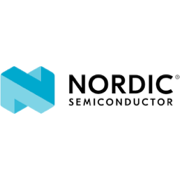Tetherless pulse oximeter can monitor COVID-19 patients at home
23-04-2020 | Nordic | Test & Measurement
Nordic Semiconductor is meeting the demand for its high-end Bluetooth SoC. This lies at the heart of an industry-leading, battery-powered wireless pulse oximeter, the Radius PPG, that was launched last year by Masimo and is now set to join the front-line battle against COVID-19 as part of that company's SafetyNet solution.
As the Radius PPG is created to enable tetherless monitoring, it can be used as part of the SafetyNet platform to remotely manage COVID-19 patients at home and conceivably assist hospitals from being overwhelmed by less severe cases.
"We didn't originally develop Radius PPG to combat COVID-19," says Bilal Muhsin, chief operating officer, Masimo. "We first and foremost developed it so it could monitor hospital patients accurately, even when the patient is moving, without the inconvenience of a wired connection to a monitor. But it turns out that in the current COVID-19 crisis this tetherless capability, when paired with a secure, cloud-based telehealth platform accessible from a smartphone for patients and from a web-based dashboard for providers, can provide a valuable way to manage COVID-19 patients who do not require hospitalisation. And continue to check them from their homes, allowing hospital beds to be freed up for those who need it. Masimo SafetyNet uses the same Radius PPG tetherless pulse oximeter designed for use in the hospital to provide a remote patient management solution small enough to be worn comfortably and simple enough to be set-up quickly on the patient's smartphone."
"Our hearts go out to the brave front line medical and hospital personnel doing their absolute best to cope with the often overwhelming numbers of COVID-19 patients coming through their doors in COVID-19 hotspots around the world," concludes Geir Langeland, Nordic Semiconductor director of sales and marketing.
Nordic's latest multiprotocol SoC is its most advanced ultra low power wireless solution. The SoC supports complex Bluetooth LE and other wireless applications that were previously not possible with a single-chip solution.
Read more articles related to the Coronavirus pandemic:
- How Are Electronics Being Used in the Fight Against the Coronavirus Pandemic?
- Disinfection Robots Battle COVID-19 Spread
- A Wireless and Wearable Polymer Temperature Sensor for Healthcare Monitoring
- Microfluidic Technology May deliver Cheap, Easy Coronavirus Test
- A Look at the Ventilators Used During the Coronavirus Pandemic


